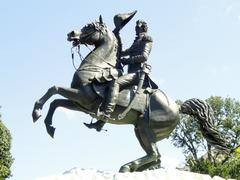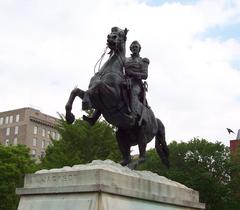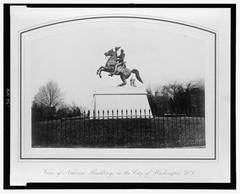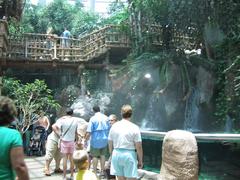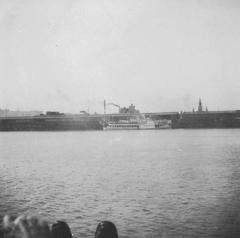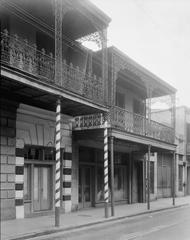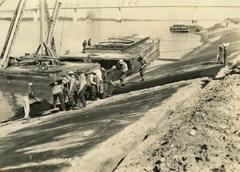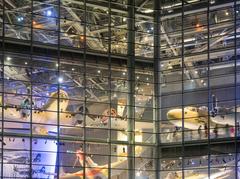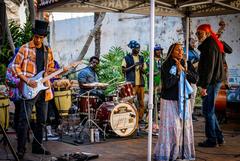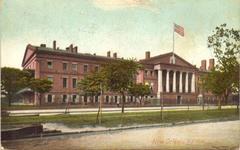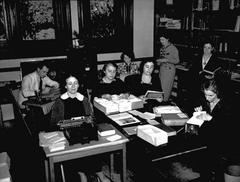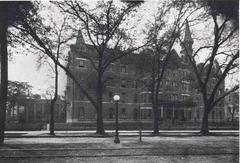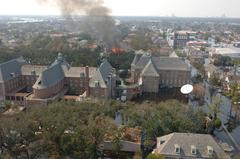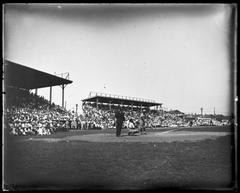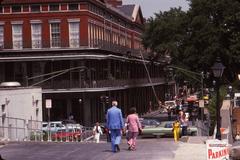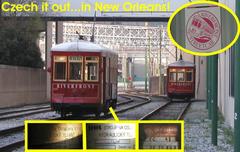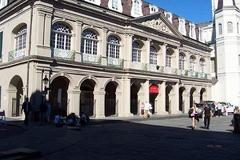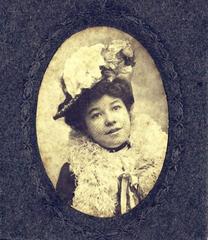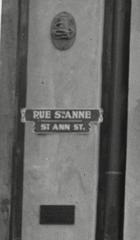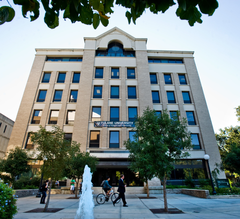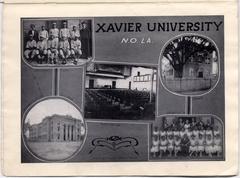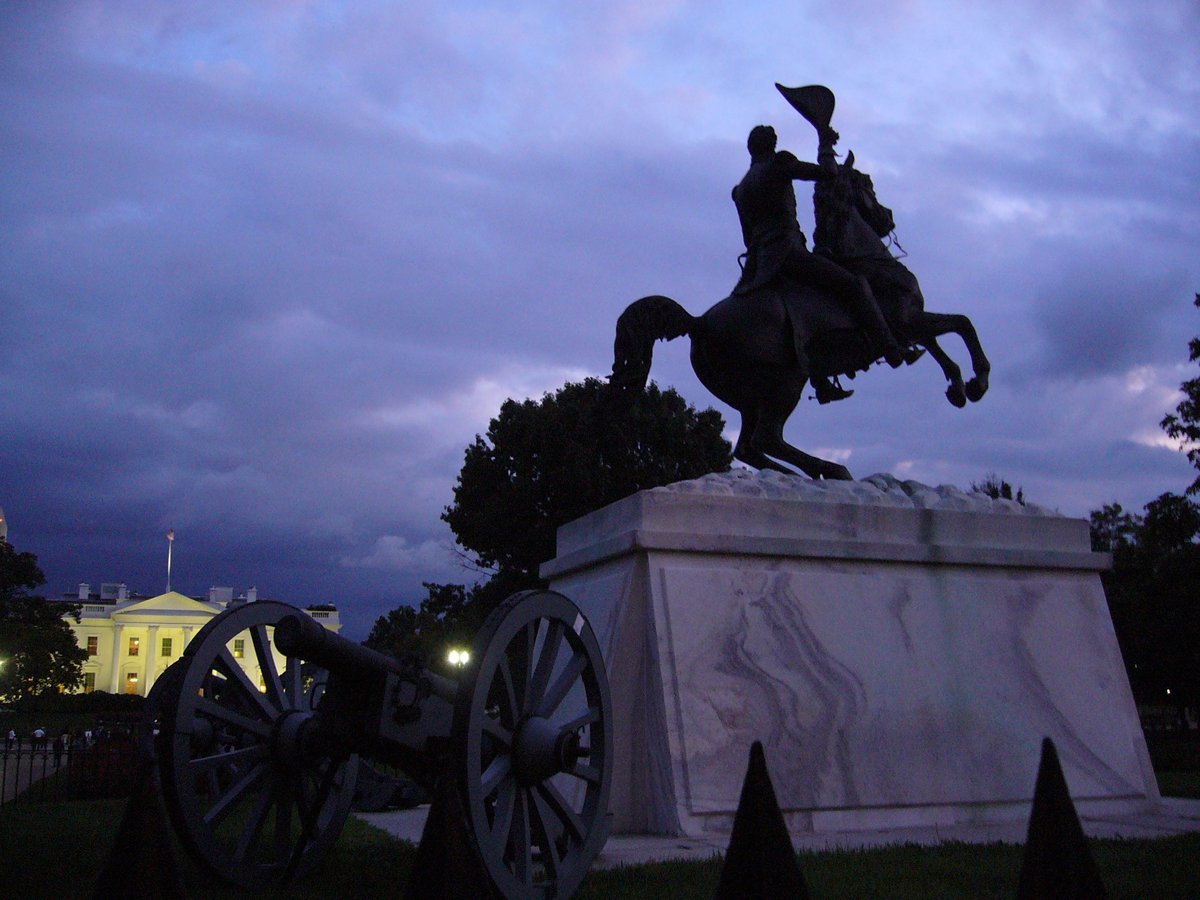
Andrew Jackson Statue and Jackson Square: Visiting Hours, Tickets, and Tips in New Orleans
Date: 14/06/2025
Introduction
Jackson Square, at the heart of New Orleans’ iconic French Quarter, is a living testament to the city’s layered history, diverse culture, and ongoing community vitality. Once known as Place d’Armes, this renowned public park was established in 1721 and has evolved into a vibrant centerpiece that reflects French, Spanish, and American influences. At its core stands the equestrian statue of Andrew Jackson, a symbol both of military triumph and of the city’s complex relationship with its past. This guide provides comprehensive information on Jackson Square’s visiting hours, ticketing, accessibility, historical context, leading attractions, and essential travel tips to help you make the most of your visit (New Orleans Historical Sites).
Table of Contents
- Jackson Square Visiting Hours and Tickets
- Historical Foundations and Urban Evolution
- Spanish Era and Architectural Legacy
- The Louisiana Purchase and American Transformation
- The 19th and 20th Centuries: Monuments and Preservation
- The Andrew Jackson Statue: History, Artistry, and Debate
- Architectural and Cultural Landmarks
- Visitor Experience: Tips and Nearby Attractions
- Events, Artistic Life, and Community
- Accessibility, Safety, and Essential Information
- FAQs
- Summary and Final Tips
- References
Jackson Square Visiting Hours and Tickets
Jackson Square is open to the public daily from 6:00 AM to 11:00 PM. Admission is free, and no tickets are required to explore the park or view the Andrew Jackson statue. The site is fully accessible, with paved walkways and nearby accessible restrooms. While the square itself is open-access, adjacent museums such as the Cabildo and the Presbytère require paid entry, with tickets typically ranging from $8 to $10 and available both onsite and online (Experience New Orleans).
Historical Foundations and Urban Evolution
Originally designed as Place d’Armes by French engineers in 1721, Jackson Square was modeled after Paris’s Place des Vosges and formed the nucleus of the nascent New Orleans settlement. French urban planning principles are evident in the square’s symmetrical design and in the grid of streets radiating out from its center. The site was chosen for its strategic bend along the Mississippi River—a vital portage long recognized by Native American communities (hnoc.org, wanderlustamerica.com).
Spanish Era and Architectural Legacy
After the Treaty of Paris in 1763, New Orleans transitioned to Spanish rule. Two major fires in 1788 and 1794 devastated much of the French colonial architecture, prompting the Spanish to rebuild with stricter building codes and new architectural styles. This blend of French, Spanish, and Caribbean influences is still visible in the surrounding buildings, notably the Pontalba Apartments and the Cabildo. The square remained the city’s ceremonial heart, hosting public gatherings, military parades, and, at times, public executions (tripsided.com, wanderlustamerica.com).
The Louisiana Purchase and American Transformation
Jackson Square played a pivotal role in 1803 as the site of the Louisiana Purchase transfer, when the territory changed hands from France to the United States. This event signaled the start of American governance and the city’s evolution into a major port and cultural crossroads (tripsided.com). During the War of 1812, General Andrew Jackson reviewed troops here before the Battle of New Orleans, uniting the city’s diverse populations for a decisive American victory (nps.gov).
The 19th and 20th Centuries: Monuments and Preservation
In 1851, the square was renamed in honor of Andrew Jackson. The iconic equestrian statue, cast in 1856 by Clark Mills, became its centerpiece, symbolizing American triumph and leadership (nps.gov). The park’s landscaping and ironwork were inspired by Baroness Micaela Almonester de Pontalba and Parisian design. The 20th century saw major restoration efforts, including WPA renovations and the closure of surrounding streets to traffic, fostering a pedestrian-friendly arts enclave. Jackson Square was designated a National Historic Landmark in 1960 and remains a celebrated gathering place for artists, musicians, and visitors (wanderlustamerica.com).
The Andrew Jackson Statue: History, Artistry, and Debate
Historical Background and Artistic Features
The Andrew Jackson statue is one of the oldest public monuments in New Orleans and among the earliest equestrian statues in America. Sculpted by Clark Mills and installed in 1856, it depicts Jackson in military dress atop a rearing horse, hat raised in salute—a technical marvel for its era (Experience New Orleans). The statue is surrounded by formal gardens and faces the Mississippi River, symbolically greeting newcomers to the city.
Symbolism and Civic Significance
The statue commemorates Jackson’s leadership during the War of 1812 and serves as a focal point for civic ceremonies and public celebrations. Jackson Square itself has long been a stage for parades, festivals, and significant city events (AP News, Planning.org).
Controversies and Calls for Removal
In recent years, the statue has sparked debates over historical memory and public monuments. While some celebrate Jackson’s military achievements, others highlight his legacy as a slave owner and the architect of the Indian Removal Act. Activist groups have called for the statue’s removal, viewing it as a symbol of oppression. Legal efforts for its removal have thus far been unsuccessful (WWLTV, AP News), but the statue remains a site of both celebration and protest (HNOC).
Architectural and Cultural Landmarks
Jackson Square is surrounded by some of New Orleans’ most significant buildings:
- St. Louis Cathedral: The oldest continuously active Roman Catholic cathedral in the U.S., notable for its triple spires and striking façade (sachaeats.com).
- The Cabildo: Scene of the Louisiana Purchase signing, now a museum of regional history.
- The Presbytère: Originally clergy housing, now featuring exhibits on Mardi Gras and Hurricane Katrina.
- Pontalba Buildings: The oldest apartment buildings in the U.S., featuring distinctive cast-iron balconies, shops, and residences.
- Nearby: Café du Monde (famous for beignets), Jax Brewery, the French Market, and the bustling Decatur Street (wanderlustamerica.com).
Visitor Experience: Tips and Nearby Attractions
- Best Times to Visit: Early mornings and late afternoons offer fewer crowds and ideal lighting for photography.
- Engage with Local Artists: The square’s iron fence is lined with local artists selling original works.
- Enjoy Street Performers: Musicians, magicians, and living statues animate the square daily.
- Guided Tours: Choose from walking, ghost, culinary, or carriage tours, many of which highlight the statue and major landmarks.
- Dining: Café du Monde for beignets, Muriel’s for Creole cuisine, and Napoleon House for classic New Orleans fare.
- Shopping: The French Market and Jackson Brewery offer local crafts, art, and souvenirs.
Events, Artistic Life, and Community
Jackson Square is a hub for festivals and seasonal events, including the French Quarter Festival, Jackson Square Caroling, Creole Tomato Festival, and Pride Month celebrations. The square’s open-air artist colony and daily performances reflect the city’s rich creative spirit (wanderlustamerica.com).
Accessibility, Safety, and Essential Information
- Accessibility: Paved walkways and ramps make the square accessible for wheelchairs and strollers. Nearby museums and restaurants also offer accessible entrances.
- Safety: The area is generally safe, especially during the day and during events. Remain mindful of your belongings in crowds.
- Restrooms: Public restrooms are available in adjacent museums, restaurants, and the French Market. Purchases may be required for access.
- Parking: Limited street parking is available; some areas offer free parking after 7 p.m. Public transit and walking are recommended (TripShock).
Frequently Asked Questions (FAQ)
Q: What are Jackson Square’s visiting hours?
A: Open daily from 6:00 AM to 11:00 PM; free admission.
Q: Is the Andrew Jackson statue accessible to the public?
A: Yes, it is located at the center of the square and open to all visitors.
Q: Are guided tours available?
A: Yes, numerous walking, carriage, and specialty tours include the square and statue.
Q: Is the area accessible for wheelchairs and strollers?
A: Yes, with paved paths and ramps throughout the square.
Q: Where are the nearest restrooms?
A: Facilities are available at nearby museums, restaurants, and the French Market.
Q: Are there controversies about the Andrew Jackson statue?
A: Yes, debates surround Jackson’s historical legacy, with some groups advocating for the statue’s removal due to his policies and actions as president.
Summary and Final Tips for Visiting Andrew Jackson Statue and Jackson Square
Jackson Square stands as one of New Orleans’ most cherished landmarks, offering a vivid tapestry of the city’s colonial origins, American transformation, and vibrant cultural present. The Andrew Jackson Statue serves as both a celebrated work of art and a focal point for ongoing dialogue about the city’s complex history (National Park Service). Today, the square is a lively hub for festivals, markets, street performances, and diverse community gatherings.
For an optimal experience, plan your visit during quieter hours or during special events, take advantage of guided tours, and engage with local artists and performers. Stay informed about events and updates by downloading the Audiala app and following local resources. Whether you’re a history enthusiast, art lover, or casual traveler, Jackson Square promises a memorable and meaningful journey through the heart of New Orleans (Wanderlust America).
Suggested Visuals
- Panoramic view of Jackson Square with St. Louis Cathedral (alt: “Jackson Square and St. Louis Cathedral, New Orleans”)
- Equestrian statue of Andrew Jackson in the center of the square (alt: “Equestrian statue of Andrew Jackson in Jackson Square”)
- Artists and street performers along the iron fence (alt: “Artists and performers entertaining visitors at Jackson Square”)
- Pontalba Buildings with cast-iron balconies (alt: “Pontalba Buildings overlooking Jackson Square”)
- Café du Monde serving beignets (alt: “Café du Monde near Jackson Square, New Orleans”)
References and Further Reading
- Jackson Square Visiting Hours, Tickets, and History | New Orleans Historical Sites
- Andrew Jackson Statue in New Orleans: Visiting Hours, History, and Controversy, 2025, Experience New Orleans
- Jackson Square Visiting Hours, Tickets, and Top Attractions in New Orleans, 2024, New Orleans Tourism
- National Park Service - Place d’Armes, 2023
- Wanderlust America - Jackson Square: Heart of New Orleans History, Culture, and Art, 2021
- WWLTV - Take Em Down NOLA Pushes to Remove Andrew Jackson Statue
- Planning.org - Great Places in America: Jackson Square
- Sacha Eats - New Orleans Itinerary
Download the Audiala app for real-time updates, guided tour bookings, and exclusive offers to enhance your Jackson Square visit!

